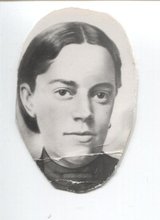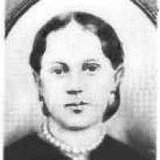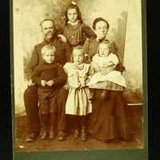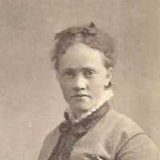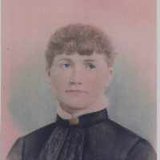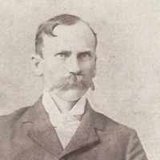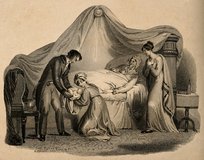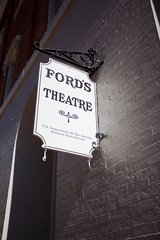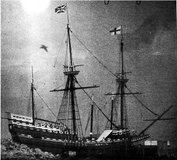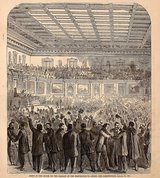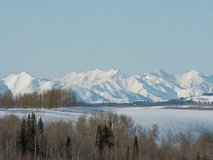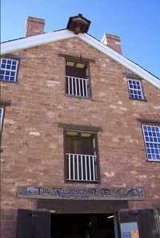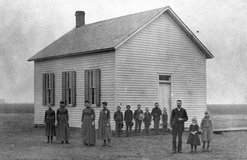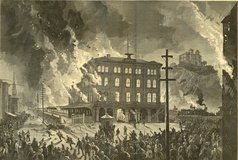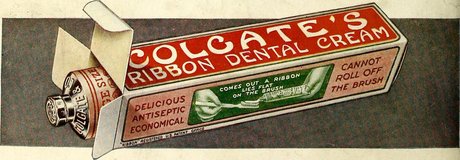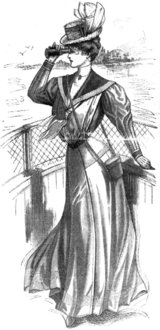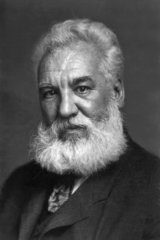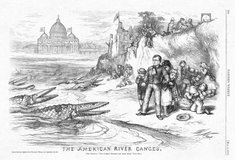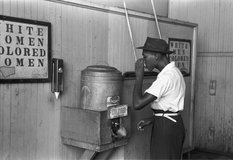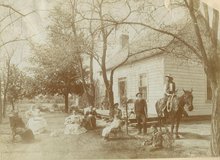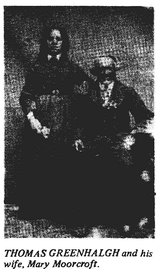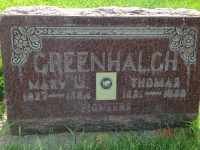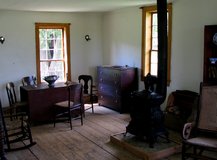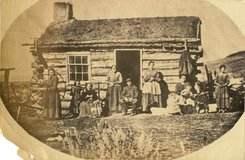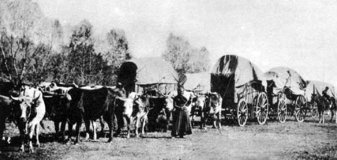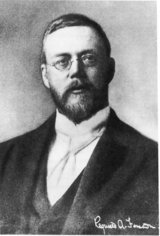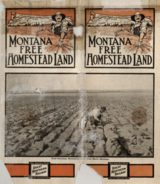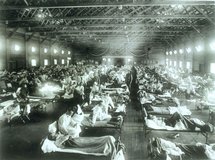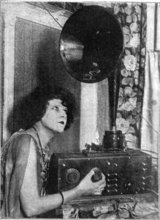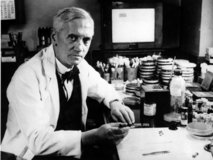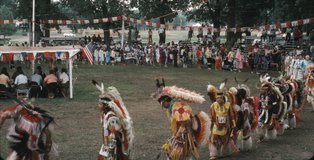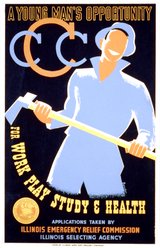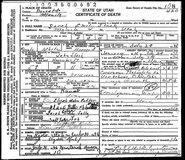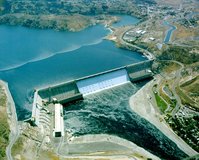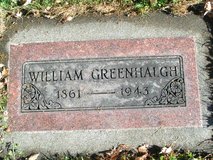©2025 HistoryLines, 2270 US Highway 30, Oswego, IL 60543.
William Greenhalgh
-
Childbirth
-
Childhood in Cohoes, ("Spindle City, New York")
-
Clothing
-
Communication
-
Diet
-
Education
-
Household
-
Hygiene
-
Jim Crow Laws
-
Marriage
-
Medicine
-
Religion
-
Transportation
-
William born
-
England
-
Childbirth
-
Lincoln Assassination
-
1865 Immigration to the United States
-
Brother Francis dies
-
13th Amendment
-
Cholera Epidemic
-
Childhood in Cohoes, ("Spindle City, New York")
-
Sister Ruth born
-
Immigration to Utah Mormon Pioneer Overland Travel Database
-
Living in Utah
-
Utah
-
Thomas and his family were called to the Cotton Mission
-
Education
-
Transcontinental Railroad is completed
-
Brother George born
-
The Long Depression
-
Hygiene
-
Telephone
-
Religion
-
William's future wife, Sarah Emily Potter, is born 17 years after William.
-
Census
-
Thomas Greenhalgh
-
Medicine
-
Small earthquake felt in parts of Utah
-
Thomas Greehalgh & Mary Moorecroft.
-
Mother dies
-
Father dies
-
Household
-
Manifesto
-
Sister Sarah dies
-
Marriage
-
Marries Sarah Emily Potter
-
Utah receives its statehood in 1896
-
Census
-
Daughter Elizabeth born
-
Ford Motors
-
The first radio broadcast is sent from Massachusetts
-
1910 Census
-
Sister Margaret dies
-
World War I
-
Virus spreads around the world
-
Vernal, Duchesne, Utah
-
Listeners tune in to public radio
-
Alexander Fleming discovers penicillin and revolutionizes the medical world
-
Neola, Utah
-
Workman Family
-
The Great Depression sees U.S. unemployment rate hit 25%
-
Pow Wow in Cashmere
-
Civilian Conservation Corps
-
Brother Thomas dies
-
Violent Windstorm
-
Sister Mary dies
-
Wife Sarah dies
-
Brother Abraham dies
-
Keele Family Move
-
Grand Coulee Dam
-
William dies but his legacy lives on.
-
Endnotes
William was born on 18 March 1861, in Whalley, Lancashire, England, United Kingdom. His mother was Mary Moorcroft and was 34 years old when William was born. His father was Thomas Greenhalgh and was 40 years old at the time. William was the seventh child of ten children.
Much of the credit for the biographical information included here is from the diary of William's oldest sister, Mary Ann Greenhalgh Mace. William was thirteen years younger than Mary.
It is likely because of his baby brother's illness and death after their arrival in America that during the voyage Mary Ann Greenhalgh would have had the responsibility of caring for her younger siblings.
Mary Moorcroft Greenhalgh had another child only thirteen months after the death of Frances Moorcroft Greenhalgh in 1866.
No known Photographs exist of these two children.
Martha Greenhalgh 1852–1856 Died in England
Francis Moorcroft Greenhalgh 1864–1865 Brother of William died one month after arriving in America.
His father Thomas kept a faithful journal from 1846 to 1850 as he served a mission for the Church of Jesus Christ of Latter-day Saints. Thomas’s journal is of a missionary type with a lot of information about his travels and teachings. There is some reference to his personal experiences. His journal seems very humble and of a pleasant attitude, a man who seems to be without guile. He writes that he was born in Farmington of Worsley, Lancashire, England 15 January 1821.
“I was of a humble family brought up at the primitive school until about 9 or 10 years of age. I began to think about religion from time to time. I went to hear the different sects. I was rather inclined to the Methodist Society. In 1840 I heard of a strange sect called Latter-day Saints. . . I believed with all my heart. I was baptized by Thomas Lathrop 3 December 1840.”
Thomas continues his writing and describes attending various meetings and having “a day of rejoicing.” At times he mentions a Miss Mary Moorcroft accompanying him to meetings. Thomas married Mary Moorecroft 26 September 1847 Eccles, Lancashire, England.
It is recorded that Mary Moorcroft was baptized 24 October 1846 in England by Parley P. Pratt.
Autobiography of Mary Ann Greenhalgh Mace, Father Thomas Greenhalgh.
"My father was a silk warper and worked at his trade in the city of Manchester in Lancashire. He learned this art when a very young man. I can not remember the time when he had any other trade than that of a silk warper. At the age of twelve years I started to work in a cloth factory where my father warped."
Throughout his life Thomas labored in the textile industry. He is listed as a silk warper while working in a factory in England. Apparently he was very good at his trade because it became his lifelong occupation. He helped to set up several textile mills in the Utah Territory and was called to serve in the "Cotton Mission." He helped provide a valuable resource to the church and to the community.
A lack of sanitation and anesthesia still made birth a painful, dangerous endeavor. While the mortality rate for children remained high—ranging from ten to thirty percent depending on the location.
From the autobiography of Mary Greenhalgh Mace we read.
"We landed at Castle Gardens, New York, June 2, 1865, and found the country in deep mourning over the tragic death of Abraham Lincoln. Everywhere we saw soldiers who were returning home from the Civil War. I remember one troop carrying what remained of a huge American Flag. The center had been taken out by a cannon ball, and soldiers were carrying it down the street by its corners. They looked ragged, tired and sick as they dragged themselves down the street to their quarters amid the shout of cheers and martial music."
What a sight this must have been for young William after traveling so far on a difficult journey.
"My mother was at the house today Ellen my sister and daughter. She asked by (my) wife if she should go to America if our Abraham sent. She said yes."
1865, William immigrated to Brooklyn, New York City, New York, United States.
Since the trip usually cost one-third of a person's annual income for an average sized family, many immigrants only had enough money to ride below deck and bring a few essential items. These people often slept in narrow, close bunks with little fresh air. During storms, the door to the deck was closed, leaving these passengers with no light and stale air, which made the stench of vomit and chamber pots even worse. Fortunately, thanks to the British Passenger Act in the early 1800s, ships had to bring along food items such as biscuits, wheat flour, oatmeal, rice, tea, sugar and molasses, along with fresh water to combat starvation. Steamships forced poor Brits to live in these conditions for around 12-14 days, which was mercifully shorter than the sailing ships of previous decades.
After they arrived in the United States, immigrants were processed and given a quick medical examination and questionnaire to determine if they would be able to stay in the country. Those with communicable diseases or mental disabilities were considered unfit for entry, but those that passed were free to leave and start their new lives.
There are many detailed accounts of the voyage of the ship Belle Wood. The ship records states that there were six hundred eighty six souls aboard. Accounts vary from “a pleasant journey,” to very crowded with “several deaths” and burials at sea. The Captain’s version is a very positive but it is described very differently by some of the passengers. The passengers were required to pass through the Castle Gardens arrival gate for health checks before being allowed to travel on this took several miserable “hot humid days.”
Autobiography of Mary Ann Greenhalgh Mace.
"In April 29, 1865, our family of nine children with Father and Mother, left Liverpool for America on a sailing vessel called the Belle Wood. This ship was in charge of Captain Freeman, a large red-headed Yankee, who said he had crossed the ocean six times. Our trip on the ocean lasted five weeks and two days. The captain said it was the nicest trip he had ever taken across the Atlantic Ocean. We landed at Castle Garden, New York, June 2, 1865."
"Letter of William H. Shearman - June 17, 1865 – Wyoming, N.T., June 17, 1865.President Wells.
Dear Brother,—As I informed you by previous letter, we anchored in New York Harbor on May 31st, and were landed at Castle Garden, with our luggage, on the following day. We experienced no difficulty in passing the doctor and custom house officers, who were very courteous and accommodating. Of course we did not fail to show our appreciation of their kindness in enabling us to pass our effects without going through all the tedious formalities of the custom house regulations. In consequence of unwillingness on the part of railway contractors to fulfil their engagements with Elder Thomas Taylor, we were detained in Castle Garden between five and six days. The weather was intensely hot, the Saints suffered much from various sources of annoyance, and disease made its appearance and began to spread rapidly. I am thankful, however, to be able to say that, by the blessing of the Lord, we escaped with the loss of but one child, who died of the croup. (Frances Moorcroft Greenhalgh) Under these circumstances Brother Taylor had no alternative but to take steps to obtain legal redress; which, when the contractors found he was determined to do, they concluded to fulfill their agreement."
The child that passed away was William's little brother Francis Greenhalgh.
Autobiography of Mary Ann Greenhalgh Mace.
"My baby brother, who had been sick on voyage, died one month after we landed in New York and was buried in the Green Wood Cemetery. A short service was held at the grave. The undertaker's name was John Mace."
Although Frances Greenhalgh was ill at this time it was noted that one month later died of "the croup." During the entry inspections they were allowed to enter the United States.
Autobiography of Mary Ann Greenhalgh Mace
"Our family stayed in New York City until the middle of September, where my sister Sarah and I obtained work in a silk factory. We were dissatisfied here because Father could not find work and we did not like living in a city either, but we were obliged to stay until we could do better. In a short time we heard of a manufacturing town called Cohoes, ("Spindle City" )which was eleven miles from Albany, so we moved there. Here we obtained a comfortable house in which to live, and secured work for us all; that was, for my sister Sarah, Father, and myself. It was while we were living here that I attended one quarter of night school, the only school I ever attended in my life. We lived here until July 10th or 12th, 1866, when Father decided to move west to Utah."
"When all was ready we sailed down the Hudson River for about three hundred miles from Albany to New York. Here we waited for more people whom we learned were also going to Utah. We were obliged to take a round about way to come west as a satisfactory agreement could not be made with the company which had been handling the immigrant traffic. Our route took us into Canada by way of the Great Lakes of Huron and Michigan, then to Chicago, from here to a place called Wyoming."
Over 400 individuals and 65 wagons were in the company when it began its journey from the outfitting post at Wyoming, Nebraska (the west bank of the Missouri River about 40 miles south of Omaha) The company arrived over a period of 2 days, the 1st and 2nd of October.
Autobiography, Ruth Elizabeth Greenhalgh Cram sister of William Greenhalgh
"We started our journey across the plains July 24, 1866, in the Joseph S. Rawlins Company when I was about six weeks old. During the early part of our journey, I was christened by Horace S. Eldredge, a returned missionary from England, and named for his mother. There were ten persons in our wagon, Father, Mother, myself, brothers and sisters, and the driver of our ox team, Cicen Chase.
About a month and a half after leaving Cohoes, a group of Indians rode into our camp. They traded back and forth with the pioneers in our company. I was about two months old at the time, and I suppose the only young baby in the company for when the Indians saw me, they wanted to trade a pony for the little white baby. When they left our camp, they circled it, yelling, whooping, and waving their arms. They made three complete circles in this manner and then rode away in a cloud of dust. This was the only encounter we had with the Indians in our journey across the plains. Our hot and dusty journey ended on the fourth of October, 1866, when we drove into the peaceful Salt Lake Valley."
Thomas Greenhalgh, Journal
"August 2nd. This morning we got ready to commence to cross the plains [from Wyoming, Nebraska]. We went about five miles the first day. We continued to increase till some days we went twenty miles or over. I was sick about one month. Our Mary was sick about a week. Margret Alice was sick for some time but all got well again. There were about twelve died on the way. A man was sick in the wagon next to us. He got killed. The wagon wheels ran over his body and burst him.
[Note: Thomas Greenhalgh’s journal is too fragmented to follow so this account of his daughter, Mary Ann Greenhalgh, is used to describe the entry of the Greenhalgh family into Utah]
Mary Ann GreenHalgh Mace, Journal
"We rested a few days and left [Wyoming, Nebraska] on July 24, 1866, about noon after we had cooked our dinner around a campfire. We were met by a company of eighty-two covered wagons which had been sent out from Utah by Brigham Young to meet the immigrants. Two families were assigned to travel in each wagon on the journey to Salt Lake City. This arrangement did not meet with my mother's approval, as she did not like the looks of some of the immigrants. She thought they might have vermin, or that we children might contract some disease from them. After talking with several of the drivers, we were assigned to ride in a wagon that carried some freight. It consisted of two large flat wooden boxes which just fit into the bottom of the wagon box and completely covered the floor. Packed into these boxes were the materials for the Great Salt Lake Tabernacle organ."
"During the journey we had delightful weather. It was warm with a few gentle rains. When we grew tired of riding we walked to rest ourselves. At night we camped in a half circle. The oxen were put in a corral made by the wagons, and we slept in the corral made by the wagons or in the wagon boxes. Every night guards stood at the opening of the circle, the men in the party together with the drivers acted as guards. We passed over hundred of miles of prairie country. One morning a girl friend and I were standing, perhaps within a stone's throw of the wagons, washing our faces and combing our hair by a small stream. Suddenly almost before we had finished, we decided to run back to the wagons. We had no more than reached them when fifteen or twenty big Indians rode into our camp. The captain of the company gave them sugar, flour, and other things to eat. I remember how they stood and looked at mother's baby, which was only a month old, and then offered to trade her a horse for it.
"After reaching Utah, the first settlement we came to was Coalville at Silver Creek, a small village with a few buildings. We did not stop here, however, as our destination was Salt Lake City, where we arrived October 4, 1866. Here we camped in the lot just east of the Tabernacle, grounds in the tithing office sheds."
The family of Thomas Greenhalgh arrived in Salt Lake 4 October 1866. They later moved South to Western Utah in Washington County. There Thomas set up the first water powered textile looms west of the Mississippi. He worked and lived in Washington County the rest of his life.
". . . we arrived Oct. 4, 1866. Here we camped in the lot east of the Tabernacle grounds in the tithing office sheds. The roof had been put on the tabernacle and the foundation for the temple was just laid. Not far from these was the old Salt Lake Theater, which was completed and had been in use for four years. We were to stay in the sheds until we could find another place. . . . " *Autobiography of Mary Ann Greenhalgh Mace
"We arrived in the little town of Washington on November 7, 1867," recalled his daughter Mary Ann. "Here we found a factory operating Mendenhall hand looms.
Father now started to set up power looms immediately, and I began to weave cloth as soon as he got the first loom set up."
From: Tartan, sage and history : the story of Robert William Rowe Campbell and Sarah Newton
At this time William Greenhalgh was six years old.
As the crisis worsened, there was a downturn in many industries that helped supply the railroads, such as the steel industry, and factories began closing their doors.
Many members of William's community would have been affected by the economic downturn. Those working in industrial cities found themselves part of the growing mass of the unemployed, while rural farmers suddenly found the banks trying to collect their debts and being unable to pay. Many workers began to wander the countryside, searching for work wherever it could be found, while the employed faced slashed wages as companies sought to save money.
The Long Depression would last until 1878, but the economy remained shaky, and another downturn would occur in the early 1890s. Throughout this time, nearly every member of William's community would have felt the impact of this catastrophic event.
In terms of oral hygiene, the average American was still unlikely to brush his or her teeth on a regular basis, let alone floss. Toothbrushes and toothpaste existed, but weren't being mass produced in the U.S. until the 1880s. Brush bristles of the time were often made from rather coarse boar's hair—not always the most gentle feeling on the gums. For feminine hygiene, women continued using cotton cloths until manufactured cloth pads became available in the mid-1800s.
It is interesting to note at this point that only the President of the Church held the keys authorizing the performance of new plural marriages. Only those that were worthy and able to provide were given this blessing. Harriet and Thomas were sealed/married in Salt Lake in 1874. Thomas and Harriet had six additional children for a total of sixteen children fathered by Thomas Greenhalgh.
William's neighbors did their best to conserve the resources they did have. Vegetable peelings could be used as mulch for kitchen gardens, and other leftover food could be donated to neighbors in need.
Milk, eggs, wheat flour, beef, potatoes, sugar, butter, and cheese were key ingredients in William's kitchen. Even those who did not own a farm often owned a cow or pig. In 1849, a family not fortunate enough to have its own milk cow could buy a quart of milk for 10 cents. A family of five usually spent about $20 each week for basic food and cooking fuel. In the second half of the 19th century, the arrival of the railroad brought a greater variety of new foods from across the country to William's region.
As a further issue, only a handful of medical colleges and hospitals existed in the United States during William's life, and high infant mortality rates— along with often devastating outbreaks of chicken pox, measles, mumps, and whooping cough— kept the average lifespan barely above 40. Death, to put it bluntly, was a very common part of life.
In another morbid part of 19th century life, some of William's deceased friends or family may have actually been buried with a shovel or pickaxe in their coffin. Why? Because with many doctors still not able to diagnose whether a patient was in a coma, relatives wanted to be sure the dearly departed had a fighting chance just in case he woke up after his funeral!
The following article Appears in the Deseret News follows:
"SAD DEATH OF A DEMENTED WOMAN.
She wanders from Home and Dies in the Hills. Washington, Washington Co., Utah, July 29th, 1885.
"It becomes our painful duty to inform the public through the columns of the News of a sad occurrence that has lately befallen one of our citizens, Mary Greenhalgh, who came to this place some 18 years since with her husband, Thomas Greenhalgh, and their little family. "Some time after their arrival Mary Greenhalgh began to manifest unmistakable signs of mental derangement. She gradually grew worse, but never grew violent. She was clean and neat in her person, and attended to her household affairs as a general thing, she having a place to herself in the suburbs of the city to live in. "At times she would take a notion to pack up some articles of clothing and leave home, sometimes going in one direction, and at other times in an opposite course, so that it was hard to keep track of her at all times. "Two weeks ago last Monday or Tuesday she left home, this time two dogs accompanying her, which she had trained for this purpose. The dogs returned on the Thursday following without their mistress. Strange to say her husband did not make the fact publicly known, either to the Church or city authorities, for more than a week after the return of the dogs, assigning as a reason that she was accustomed to leave home and come back again. As soon as it reached the ears of the Bishop he immediately took steps to get horsemen started in search of her. And almost if by magic from 15 to 20 young men were at the rallying point, ready to start. "They succeeded in finding the dead body of the unfortunate woman some five or six miles from her home in the hills, in an advanced stage of decomposition, supposed to have been dead some eight or ten days.
Apparently there was a coroner's inquest:
DIED IN THE HILLS
The Fate of a Demented Woman of Washington, Utah
A demented woman named Mary Greenhalgh, 58 years of age, wandered away from her home in Washington, Utah, about three weeks ago, and nothing was heard from her until a search was instituted, which resulted in the discovery of her body in an advanced stage of decomposition in the hills, seven or eight miles from her home.
The following is the verdict of the coroner’s jury for which we are indebted to a southern correspondent.
TERRITORY OF UTAH, COUNTY OF WASHINGTON
An inquest holden in Washington Precinct, Washington County, on the 27th day of July,, 1885, before J. H. Crawford, Justice of the Peace in Washington Precinct, upon the body of Mary Greenhalgh, there lying dead by the jurors whose names are hereto subscribed. The said jurors upon oath do say, that during a state of insanity, to which she has been given for some time, and probably neglect of her husband, she wandered from home and perished for water on or about the 16th of July, 1885.
Virgil Helly,
Hyrum S. Miller,
Simeon A. Dunn
Jurors.
Salt Lake Tribune https://newspapers.lib.utah.edu/details?id=10712964
Thomas survived his wife Mary by less than a year.
The following article appeared in the Deseret News for May 19, 1886:
"Washington, Washington County, Utah May 20, 1886. "Thomas Greenhalgh, son of William and Margaret Greenhalgh, born Jan. 15, 1821, at Tyldesley, Leigh Parish, Lancashire, England. Baptized at Pendlebury, Manchester Conference, December 3rd, 1840, by Thomas Lythgoe.
"Deceased died as he had lived, a firm believer in the Gospel. In his younger days in his native land he was a zealous advocate and defender of the truth."
Buried in Burial:
Washington City Cemetery
Washington
Washington County
Utah, USA
Typical houses had two rooms. Families generally had tables where they would sit to eat their meals. Most furniture was custom-made, but later in the 1800s, it became easier to purchase affordable, mass-produced goods with which to furnish a home.
The Manifesto helped ease tensions between the U.S. government and the Mormons in the Utah Territory, opening the door to Utah statehood. Many of people strongly supported the Manifesto, recognizing both moral and political benefits to the change. However, some local Mormons were disappointed by the ruling, believing that the Church was sacrificing its doctrine for political gain.
Interestingly Thomas Greenhalgh and Mary Moorecroft were sealed for time and all eternity by Wilford Woodruff on 19 October 1867 in Endowment House in Salt Lake City, Utah.
2 November 1892. She was just fourteen years of age and he was thirty one.
One can only imagine why the two would marry at her young age. She was from a strong LDS family and her grandfather William Washington Potter was with a surveying company when killed by the Indians. It is known as the Gunnison Massacre and can be read about in his biography.
As for communicating with friends and loved ones, the United States Postal Service was expanded and refined during these years, giving William a simple, reliable way to stay in touch with people anywhere in the country.
He had five children, including Grandmother Elizabeth Ruth Greenhalgh. During this time two more children were born, George and Eva Greenhalgh which died during the same year that they were born.
She married Chester Reynald Keele on 2 Nov 1918 Duchesne, Utah.
To take advantage of the new act, land owners were required to have five years of continuous residence on their property. They also had to be U.S. citizens, or in the process of earning their citizenship.
While homesteading on dry land still presented challenges, the convenience of new rail lines and the emergence of new towns in the Northwest made it easier to sell crops far and wide. Unfortunately, a shortage of proper investigators also made it easy for some homesteaders to make false claims and grab more land unlawfully.
William is now 49 years old and wife Sarah Emily Potter is 32.
They have six children:
Sarah Melissa Greenhalgh 1893
Mary Emily Greenhalgh 1895
Alice Fern Greenhalgh 1896
Myrtle Nellie Greenhalgh 1898
Elizabeth Ruth Greenhalgh 1900
William Wallace Greenhalgh 1903
Two children George Greenhalgh 1907, Eva Greenhalgh 1908 died in infancy.
America mobilized over 4,000,000 military personnel through both voluntary enlistment and the passage of the Selective Service Act; 110,000 of these combatants were killed. Military training camps opened up across the country, and William and members of his family and community may have seen military personnel, wagons, and trucks passing through on their way to set up camps.
On the home front, many helped the war efforts by buying Liberty bonds, war savings stamps, and contributing to other wartime organizations. Some farmers sectioned new space of their farms for food crops to aid in feeding soldiers. Others took part in food-conservation programs where citizens abstained from certain foods based on the day, such as wheatless Mondays and Wednesdays, to help conserve for the war effort.
An Allied victory was reached with an armistice on November 11, 1918, but as soldiers returned home with both visible and unseen battle wounds, the world would never be the same.
At this time the five oldest daughters including children Sarah Melissa, Mary Emily, Alice Fern, Myrtle Nellie, and Elizabeth Ruth have all married and left the home. He is shown as operating as a farm labor on his “own account.” William’s obituary states he operated a large sheep and cattle farm. This may the location of his farm.
In 1920, the Pittsburgh company Westinghouse (one of the largest radio manufacturers in the nation) devised a plan to sell more radios. They decided to make a broadcasting transmitter that would allow radio owners throughout the region to tune in for different programs. To make this dream a reality, they hired Dr. Frank Conrad — a local ham radio operator who often played records over the air for his friends and listeners — to set up a broadcasting channel, KDKA. November 2, 1920, the day of the presidential election, was to be the first day of programing.
Listeners in the area who tuned in that day heard a reading of the results of the presidential election, where Harding decisively defeated Cox. The broadcast, although heard by only a small group of people, was a stunning success and caused radio mania to grip the nation. Radio sales soon exploded throughout America, and there was a rush to open up and register commercial radio stations in most major cities. The Age of Radio had truly begun.
A further search finds that she has remarried a Dennis Slack in about 1918 and is living in Green River, Sweetwater, Wyoming. She is 48 years old.
Her youngest daughter Wanda Greenhalgh is fifteen years old and living with her mother.
The pow wow was also a chance to bring awareness to these issues while also boosting the economy of Cashmere, and local tribal leaders and the chamber of commerce were in favor.
Ten thousand people attended, raising enough money from ticket sales to allow for the restoration of a Native American cemetery. However, it is unlikely that many of William's friends and neighbors were aware of the treaty issues organizers had hoped to highlight, as local newspapers barely mentioned them at all.
The storm struck early in the morning of October 21 in southwest Washington. Surging tidal waters spilled into downtown Aberdeen and Hoquiam; low-lying parts in Aberdeen were submerged in six feet of water, while half the homes in Hoquiam were flooded. The storm struck Seattle at 10:10 am, shattering stained glass windows downtown and blowing down church steeples there and in Tacoma; three girls were severely injured when debris from a steeple fell on them.
The windstorm proved deadly, killing as many as 22 people.
It is worth noting that Sarah died of "Carcinoma breast, metastatic bilateral" at the young age of 58, and her granddaughter Velva Jean Keele died of breast cancer also. This appears to a family trait that needs to be monitored by her descendants.
Sarah Melissa Greenhalgh 1893–1948, Lindsay Nathaniel Workman
1887–1936
Elizabeth Ruth Greenhalgh 1900-1971, Chester Reynald Keele 1897–1977.
Other children of William Greenhalgh and Sarah Emily Potter:
• Mary Emily Greenhalgh married Dumont Arbuckle and is buried in 27 April 1960, Roosevelt, Duchesne, Utah
• Alice Fern Greenhalgh married Denzil Rex Gardner and died 5 April 1922, Neola, Duchesne, Utah.
• Myrtle Nellie Greenhalgh married Keith Warby and died 15 June 1974, Manila, Daggett, Utah.
• William Wallace Greenhalgh married Anne Sevella Wilson and died 14 Mar 1962, Rock Springs, Sweetwater Co. Wyoming.
• George Greenhalgh born and died in 1907, Hayden, Uintah, Utah.
• Eva Greenhalgh born and died 1908, Neola, Wasatch, Utah.
• Elijah John Greenhalgh married Fern Marie Lamb and died 24 Apr 1972, Manila, Daggett, Utah.
• Wanda Greenhalgh married Charles Ambrose Potter and died in 13 June 1988, Ogden, Weber, Utah.
Obituary of William Greenhalgh for Wenatchee Daily World 25 January 1943:
"William Greenhalgh, 82 died at his home on Springwater Ave., early Sunday morning after a two day illness. He was born March 18, 1861 in Manchester England and came to the United States with his parent when four years of age. The family located in New York State and came to Utah when Mr. Greenhalgh was a young man, where he operated a large sheep and cattle ranch near Kanab, Utah. He married Sarah Potter Nov. 2, 1892. She died in 1936 and he came to Wenatchee to make his home with his daughter, Mrs. Elizabeth Keel(e), in June 1941."
"Mr. Greenhalgh was a member of the Church of Jesus Christ of Latter-day Saints. Surviving are his two sons, W.W. and A. J. Greenhalgh, both of Rock springs, Wyoming; five daughters, Mrs. Elizabeth Keel and Mrs. Sadie Workman, both of Wenatchee, Mrs. Dumont Arbuckle of Roosevelt Utah, Mrs. Kenneth Reed of Manila, Utah and Mrs. Ted Potter of Rock Springs, Wyo. One sister Mrs. Elizabeth Cram of Kanab, Utah 33 grandchildren and 14 great grandchildren, Funeral arrangements will be announced by Jones and Jones."
William Greenhalgh went through a lot of changes in his lifetime, from a small boy born in England traveling with his family across the Atlantic, to a covered wagon train crossing the mountains to Utah. He may have saw the passing of his baby brother. His family settled in Southern Utah as pioneers. They established and worked in textile mills and at farming.
He had married a girl young enough to be his daughter and began his own family. He toiled on his farm raising children through dust bowl and depression through two world wars and the invention of phones, electricity and automobiles. Three of his children and his wife died before his passing in 1943. We can only imagine the life he led and the things he experienced, his personality, his work ethic and his love as a father.
His life and legacy lives on in each descendant that remembers and looks forward to a glorious reunion in the eternities.
MS 17381 [15 May 2017] Thomas Greenhalgh Journal available for PDF download.
Wikipedia (www.wikipedia.org), “Castel Clinton (Castle Garden),” rev. 17:00, 7 May 2017.
Mary Ann Greenhalgh Mace, “ Liverpool to New York 29 Apr 1865 - 31 May 1865” Brigham Young University, Mormon Migration (https://mormonmigration.lib.byu.edu): 2017
Familysearch, “Life Sketch of William Washington Potter,” FamilySearch (www.familysearch.org : April 2013), contributed by Shannon Wilcox.
Utah’s Online Library, Wasatch County, onlinelibrary.utah.gov : 18 August 2017
1930 U.S. Census, Sweetwater County, Wyoming, population schedule, Greenriver Township, enumeration district, (ED) 19-13, p 1-b, dwelling 29, family 29, Dennis Slack: digital images, Ancestry.com (www.ancestry.com : accessed 17 May 2017); citing National Archives and Records Administration microfilm T626, roll 2625.
Familysearch, “Utah Death Certificates, 1904-1964,” database, FamilySearch (www.famlysearch.org : 17 May 2017), Sarah Emily Slack.



